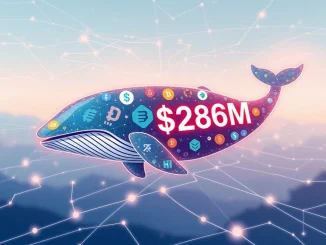
Get ready, crypto world! A major shift is underway in decentralized finance (DeFi) as Aave, a leading lending protocol, takes a bold step. The Aave community has given its approval to add PEPE as the first meme coin collateral on the platform. This move is significant and signals a potential evolution in what assets are considered viable within the DeFi ecosystem.
What Does Aave Approving PEPE Collateral Mean?
In a landmark decision, the Aave community voted overwhelmingly to include the popular meme coin, PEPE, as an accepted form of collateral. This isn’t just any new asset addition; it marks PEPE as the very first meme coin to gain this status on Aave. Think about it – a coin known primarily for its meme status and community hype is now potentially usable to borrow other assets on a major DeFi platform. According to reports from JinSe Finance, the governance proposal received strong support, passing with a notable 76.76% of the votes cast.
The Details of the PEPE Aave Integration
The approved proposal specifically targets Aave V3’s isolated market. This is an important detail, as isolated markets on Aave are designed to contain the risk associated with newer or potentially more volatile assets. By listing PEPE in an isolated market, Aave aims to mitigate potential systemic risks to the broader protocol while still allowing users to leverage their PEPE holdings. The integration process isn’t finished yet; the proposal will now proceed to a crucial risk assessment phase and then move through the formal governance steps required to implement the change on the protocol.
Why Meme Coin Collateral? The Goals Behind the Move
So, why would a protocol like Aave consider adding meme coin collateral? The proposal outlines several strategic objectives:
- Expand User Adoption: Tapping into the large and enthusiastic PEPE community could bring new users into the Aave ecosystem who might not have engaged with DeFi lending before.
- Boost GHO Stablecoin Usage: By allowing users to borrow the Aave-native stablecoin, GHO, against their PEPE collateral, the proposal aims to increase GHO’s utility and circulation.
- Increase Protocol Revenue: More activity on the platform, including borrowing and lending against PEPE, can potentially lead to higher fees and revenue for the Aave protocol.
This strategic move highlights Aave’s willingness to innovate and potentially capture value from previously untapped corners of the crypto market, even those as speculative as meme coins.
Navigating the Aave Governance Process: What Happens Next?
The 76.76% vote is a significant step, but it’s not the final one. The Aave governance model is multi-phased to ensure careful consideration of changes. The proposal’s journey continues with a detailed risk assessment. This involves analyzing the specific characteristics of PEPE, such as its liquidity, volatility, and market capitalization, to determine appropriate risk parameters like Loan-to-Value (LTV) ratios and liquidation thresholds. Following a successful risk assessment, the proposal will undergo formal governance steps, likely involving further on-chain votes to deploy the necessary smart contracts and finalize the integration. This phased approach is crucial for maintaining the security and stability of the DeFi lending platform.
Impact on DeFi Lending and Risk Considerations
The addition of PEPE as meme coin collateral on Aave could set a precedent for other DeFi protocols. It opens up a new class of assets for potential utility within lending and borrowing markets. For PEPE holders, it provides a potential way to unlock liquidity from their holdings without selling them. However, it’s vital to acknowledge the inherent risks. Meme coins are notoriously volatile, and using them as collateral means borrowers face a higher risk of liquidation if the price of PEPE drops sharply. Users considering borrowing against PEPE on Aave V3’s isolated market must fully understand these risks and the specific parameters set for the asset.
Conclusion: A Historic Moment for Aave and Meme Coins
The Aave community’s approval of PEPE as the first meme coin collateral is a truly historic moment in DeFi. It demonstrates Aave’s adaptability and ambition to attract new users and enhance its protocol’s functionality. While the move comes with inherent risks due to the nature of meme coins, the plan to list PEPE in an isolated market and conduct thorough risk assessments indicates a cautious yet innovative approach. All eyes will now be on the risk assessment and final governance steps to see this groundbreaking integration come to fruition and observe its impact on the Aave ecosystem and the broader DeFi lending landscape.



